BBQ Techniques Explained: A Master Guide
Are you ready to elevate your grilling game from casual backyard cook to neighborhood pitmaster? Understanding the fundamental principles behind different cooking methods is the key to unlocking new levels of flavor and tenderness. This guide, BBQ Techniques Explained, will walk you through the core methods, from high-heat searing to low-and-slow smoking, equipping you with the knowledge to tackle any cut of meat. Master these techniques, and you’ll be able to confidently grill, smoke, and roast your way to BBQ perfection every time.
The Four Pillars of BBQ: Grilling, Smoking, Roasting, and Braising
When we talk about cooking with fire and smoke, it’s easy to lump everything under the umbrella of “BBQ.” However, true masters know there are distinct techniques, each with a specific purpose. This section will provide an in-depth look at these foundational methods.
BBQ Techniques Explained: A Master Guide
BBQ Techniques Explained
Grilling: The Art of Direct Heat
Grilling is the most common and fastest method of outdoor cooking. It involves cooking food directly over a high heat source, such as hot coals or gas burners. This technique is perfect for thinner, tender cuts of meat that cook quickly.
The high temperature creates the Maillard reaction, a chemical process that browns the surface of the meat and develops rich, savory flavors. Think of classic grill marks and a crispy exterior. For best results, preheat your grill thoroughly and place your food directly above the heat source.
Step-by-Step Direct Grilling:
- Preheat your grill to a high temperature, around 450-550°F (232-288°C).
- Clean and oil your grates to prevent sticking.
- Place your seasoned meat directly over the heat source.
- Flip the meat once halfway through the cooking process. Use a meat thermometer to check for doneness.
- Allow the meat to rest for a few minutes before slicing to let the juices redistribute.
Internal Link Suggestion: For specific recipes using this method, check out our post on Grilling Ribeye or Grilling Pork Chops.
Smoking: The Low and Slow Method
Smoking is a technique that uses indirect, low heat and wood smoke to cook and flavor food over an extended period. This method is ideal for tough, fatty cuts of meat like brisket and pork shoulder, as the long cooking time breaks down connective tissues, making the meat incredibly tender.
The temperature for smoking is typically maintained between 225-275°F (107-135°C). The type of wood you use—hickory, cherry, or mesquite—imparts a unique flavor profile to the final product. Understanding the nuances of this technique is a key part of BBQ Techniques Explained.
The Science of Smoking:
- Low Temperature: The gentle heat slowly renders fat and melts collagen, preventing the muscle fibers from seizing up and becoming tough.
- Smoke: The smoke molecules from the wood penetrate the meat’s surface, creating a signature smoky flavor and forming the iconic “smoke ring.”
- Time: Patience is a virtue in smoking. The long duration ensures that even the most stubborn cuts become fork-tender.
Internal Link Suggestion: To truly master this technique, our guide on Smoking Brisket is a must-read. You can also learn about pairing the right wood with your meat in our guide on Best Woods for Smoking Meat.
Roasting: The Power of Indirect Heat
Roasting is similar to smoking in that it uses indirect heat, but it generally operates at a higher temperature, typically between 300-400°F (150-200°C), and without the smoke component. This technique is perfect for larger, more uniform cuts like whole chickens, beef roasts, or pork loins.
With roasting, the food is placed away from the direct flame, often on the cooler side of the grill or in a dedicated roaster. This allows the meat to cook evenly from all sides, resulting in a juicy interior and a perfectly browned exterior.
External Link Suggestion: For a deeper dive into the science of roasting, you can consult resources like the amazingribs.com guide on roasting to understand the principles of dry-heat cooking.
Braising: The Ultimate Tenderizer
Braising is a lesser-known BBQ technique, but it’s incredibly effective for very tough cuts. This method involves searing the meat first to develop a rich crust, and then simmering it in a flavorful liquid (like broth or beer) at a low temperature for an extended period. While typically done on a stovetop or in an oven, it can be adapted for a grill by using a Dutch oven or heavy-duty pot.
Braising is a game-changer for cuts like chuck roast or short ribs. The combination of moist heat and slow cooking breaks down collagen into gelatin, yielding incredibly tender, pull-apart meat. This technique is a perfect example of the versatility of outdoor cooking.
Internal Link Suggestion: If you’re looking to apply this technique, our post on How to Braise Meat for Maximum Tenderness provides detailed instructions.
Hybrid and Advanced BBQ Techniques Explained
Beyond the four foundational methods, there are several advanced techniques that combine elements of grilling and smoking to achieve unique results. These techniques are what separate a good cook from a great one.
The Reverse Sear
The reverse sear is a revolutionary technique that flips the traditional searing process on its head. Instead of searing at the beginning, you start by cooking the meat low and slow with indirect heat until it’s just shy of your desired doneness. Then, you finish it with a quick, high-heat sear.
This method is especially effective for thick cuts of steak like ribeye or filet mignon. The slow cooking phase ensures the meat cooks evenly all the way to the center, preventing a gray band of overcooked meat. The final sear creates a perfect, dark crust. This is one of the most effective BBQ Techniques Explained for perfect steaks.
Why it Works:
- Even Cooking: The low heat cooks the steak uniformly, preventing the outer layers from drying out.
- Perfect Crust: The final high-heat sear creates a delicious, crispy surface without overcooking the interior.
- Resting: The long, slow cook effectively serves as a resting period, so you can serve the steak almost immediately after searing.
Internal Link Suggestion: For a step-by-step guide on this method, refer to our post on The Reverse Sear.
Two-Zone Grilling
Two-zone grilling is the practice of creating a hot zone and a cool zone on your grill. This is essential for controlling temperature and mastering techniques like roasting and reverse searing.
Setting up Two-Zone Grilling:
- Charcoal Grill: Pile all your hot coals to one side of the grill. The other side will be your indirect, cooler zone.
- Gas Grill: Turn on the burners on one side of the grill to high and leave the other burners off. The area with the turned-off burners is your cool zone.
This setup allows you to move food from direct heat to indirect heat as needed. For example, you can sear a steak on the hot side and then move it to the cool side to finish cooking through without burning.
The 3-2-1 Method for Ribs
This is a classic smoking technique specifically for pork spare ribs. The name refers to the three phases of cooking:
- Phase 1 (3 hours): Smoke the ribs unwrapped at a low temperature (around 225°F or 107°C). This is where the smoke flavor and a beautiful bark are developed.
- Phase 2 (2 hours): Wrap the ribs tightly in foil with a little liquid (like apple juice or beer). This steams the ribs, making them incredibly tender and fall-off-the-bone.
- Phase 3 (1 hour): Unwrap the ribs and place them back on the smoker to firm up the bark and apply any final glaze or sauce.
This method is a perfect example of a comprehensive BBQ Techniques Explained approach, combining smoke, steam, and direct heat to achieve a specific result. For more information, you can find a good reference on the National Barbecue & Grilling Association’s website.
Mastering Your Technique: Tools and Tips
Having the right tools is just as important as knowing the techniques. A simple meat thermometer and a pair of long tongs can dramatically improve your results.
- Meat Thermometer: The single most important tool. It takes the guesswork out of cooking and ensures you never overcook your meat.
- Charcoal Chimney: If you use charcoal, a chimney starter is the fastest and easiest way to get your coals hot without lighter fluid.
- Grill Press: A grill press helps achieve a consistent sear on thinner meats and prevents bacon from curling.
Remember, practice makes perfect. Don’t be afraid to experiment with different types of wood, rubs, and sauces. Every grill is a little different, and a true master understands the unique characteristics of their own setup.
Final Thoughts
Understanding the core principles of BBQ Techniques Explained is your first step toward becoming a true grill master. From the blistering heat of direct grilling to the patient, smoky art of low-and-slow, each technique offers a unique way to transform meat into a culinary masterpiece. By mastering these foundational methods and experimenting with advanced approaches like the reverse sear and two-zone grilling, you will be well on your way to creating unforgettable meals. Now, fire up your grill and put your new knowledge to the test!
Want to master grilling and smoking? Explore our ultimate BBQ resources
Steak 2025: The Ultimate Guide
Steak 2025: The Ultimate Guide to Cuts, Trends, and BBQ.
Further Reading:
- The Ultimate Grilling and Smoking Guide
- BBQ Gadgets You Need: The Ultimate Guide for Beginners and Pros
- BBQ Guides: Your Ultimate Resource for Grilling & Smoking Mastery
- BBQ Mistakes to Avoid: Expert Tips for Perfect Grilling
- BBQ Recipes: Grill, Smoke & Sear Your Way to Delicious Meals
- BBQ Rubs & Sauces Guide
- BBQ Styles: A Global Guide
- BBQ Tips: 25 Pro Secrets for Perfect Grilling and Smoking

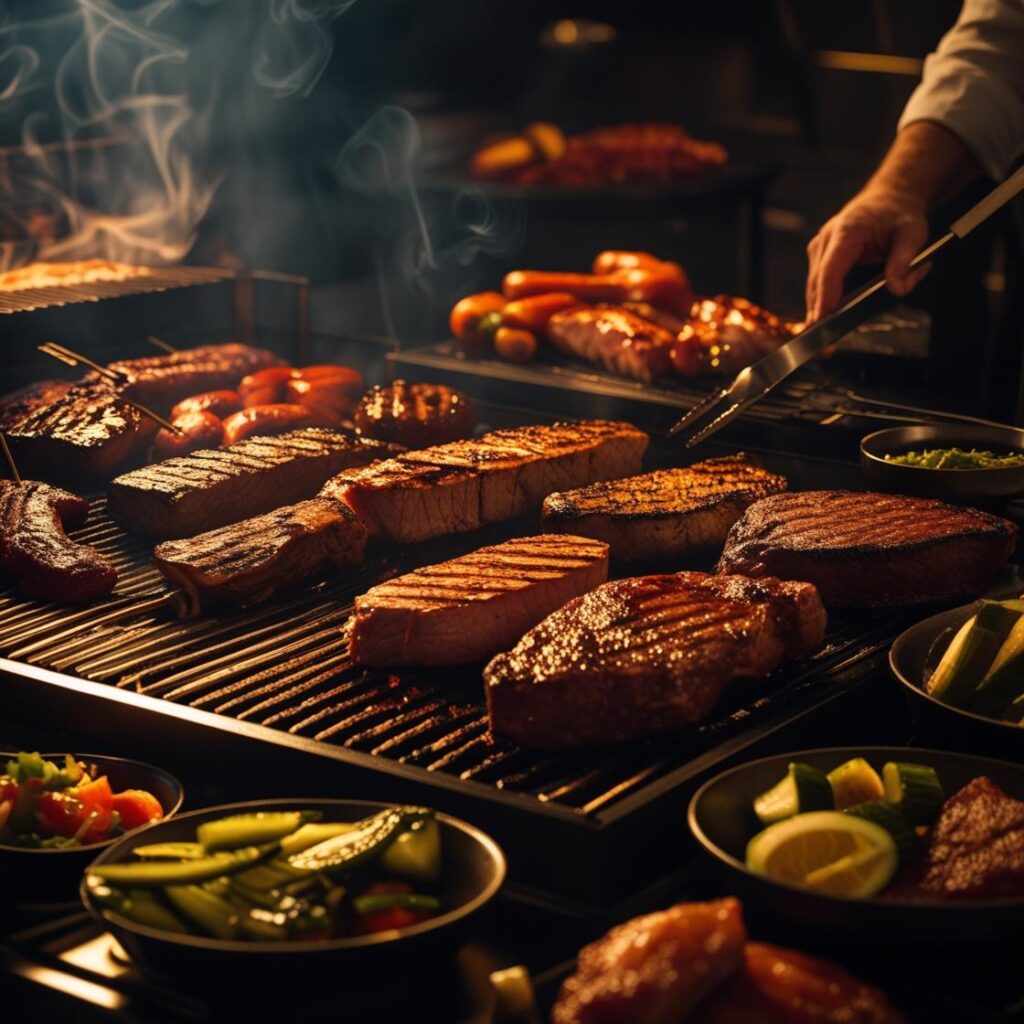

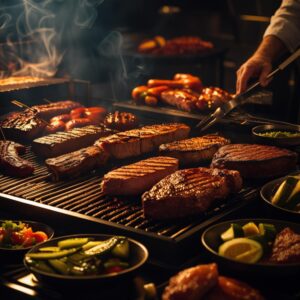
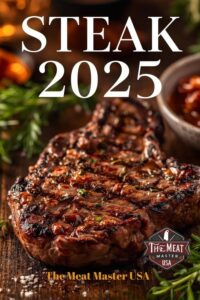
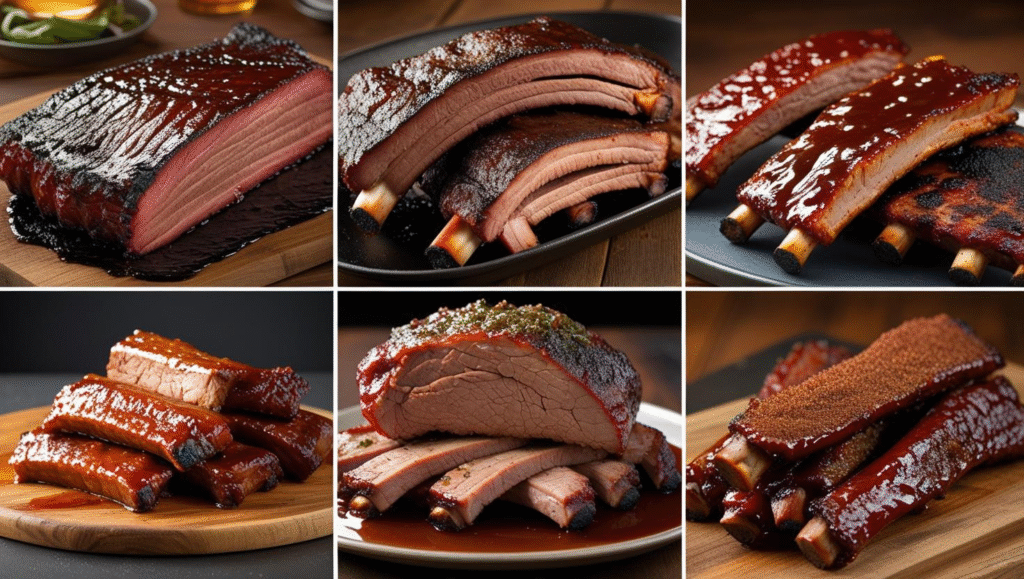
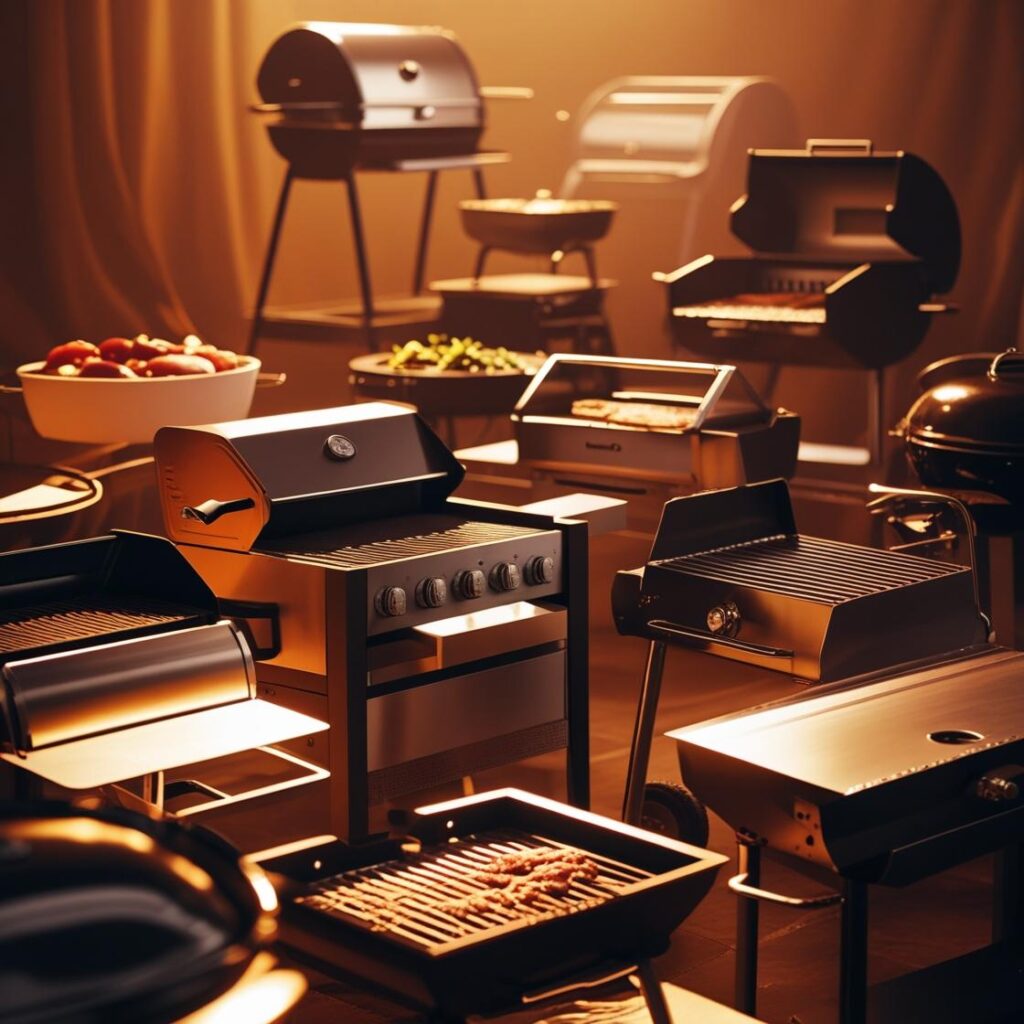
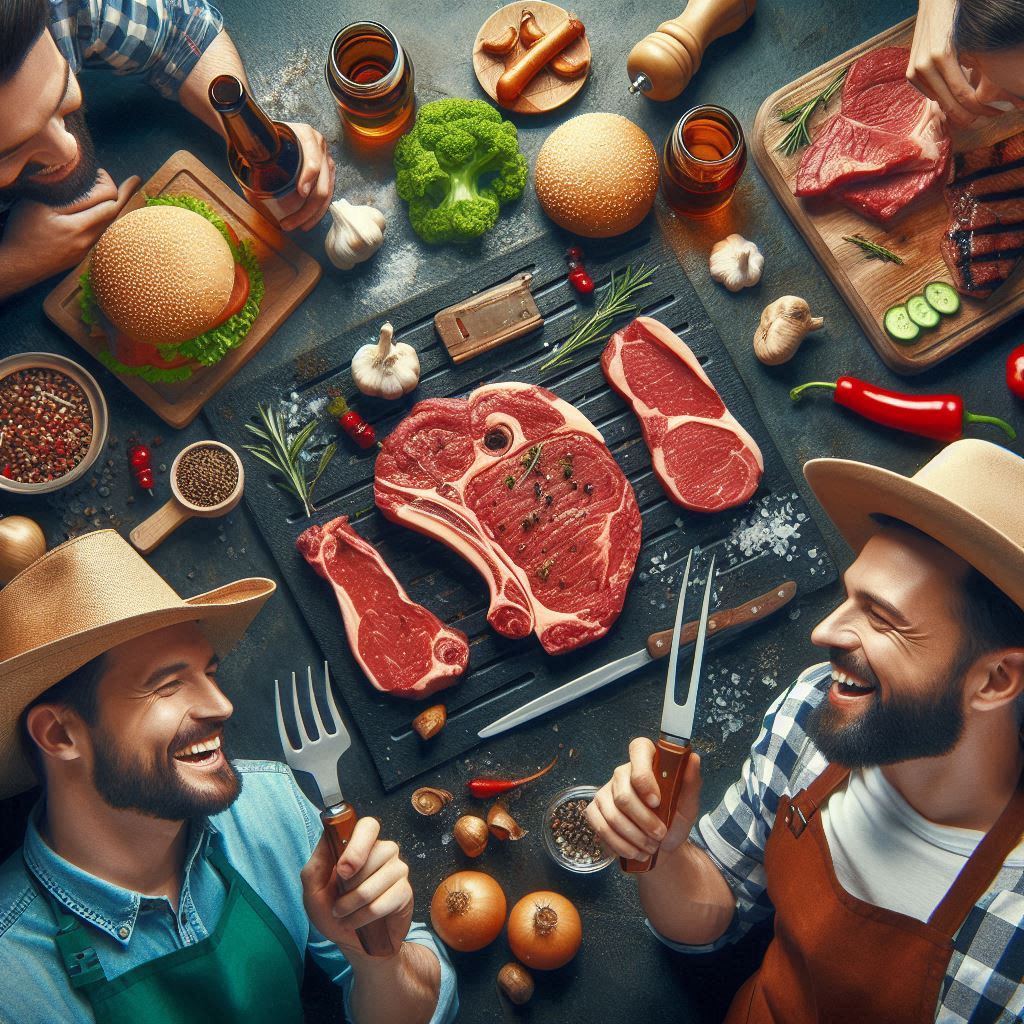
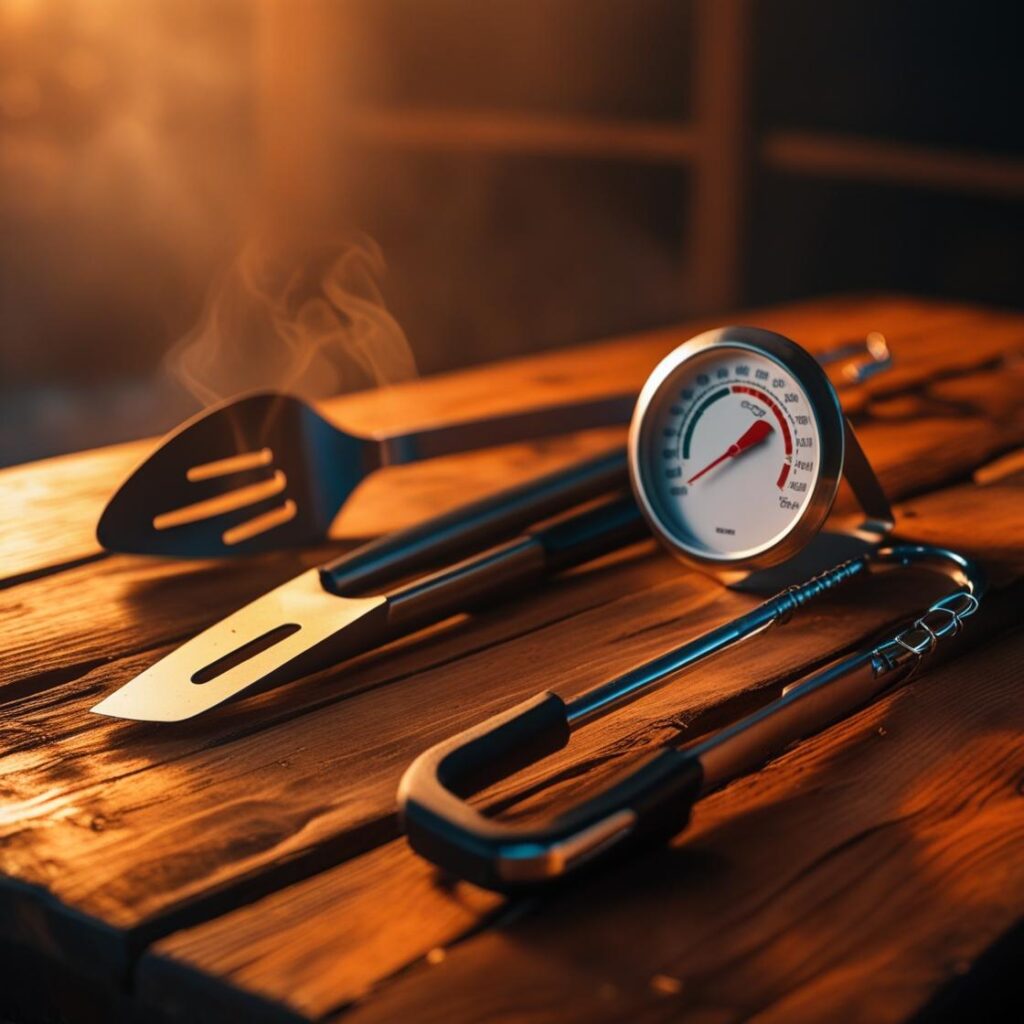
Pingback: BBQ: More Than a Meal: Your Guide to Grilling & Smoking [2025]
Pingback: Pulled Pork Perfection: Ultimate Low and Slow Cooking Guide (2025)
Pingback: Pork Cuts Explained: A Comprehensive Guide [2025] The Meat Master USA
Pingback: Best Pork Cuts for BBQ: Ultimate Grilling & Smoking Guide [2025]
Pingback: Backyard BBQ Ideas for Beginners: The Ultimate Guide
Pingback: The Ultimate Steak Doneness Guide: From Rare to Well-Done [2025]
Pingback: The Single-Sided Sear: What Happens When You Never Flip Your Steak?
Pingback: Essential BBQ Tools & Gadgets Every Home Pitmaster Needs [2025]
Pingback: Steak 2025: The Ultimate Guide to Cuts, Trends, and BBQ